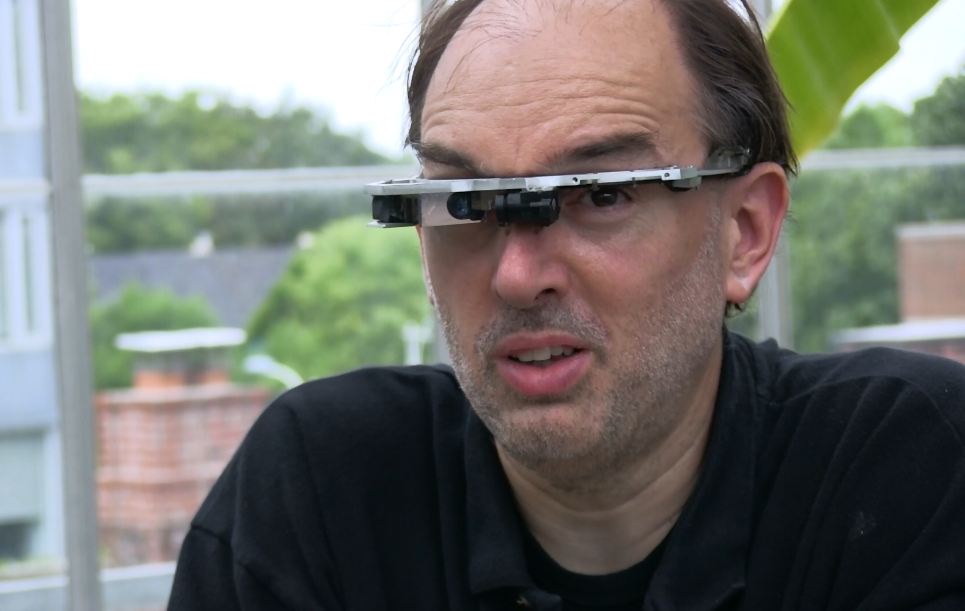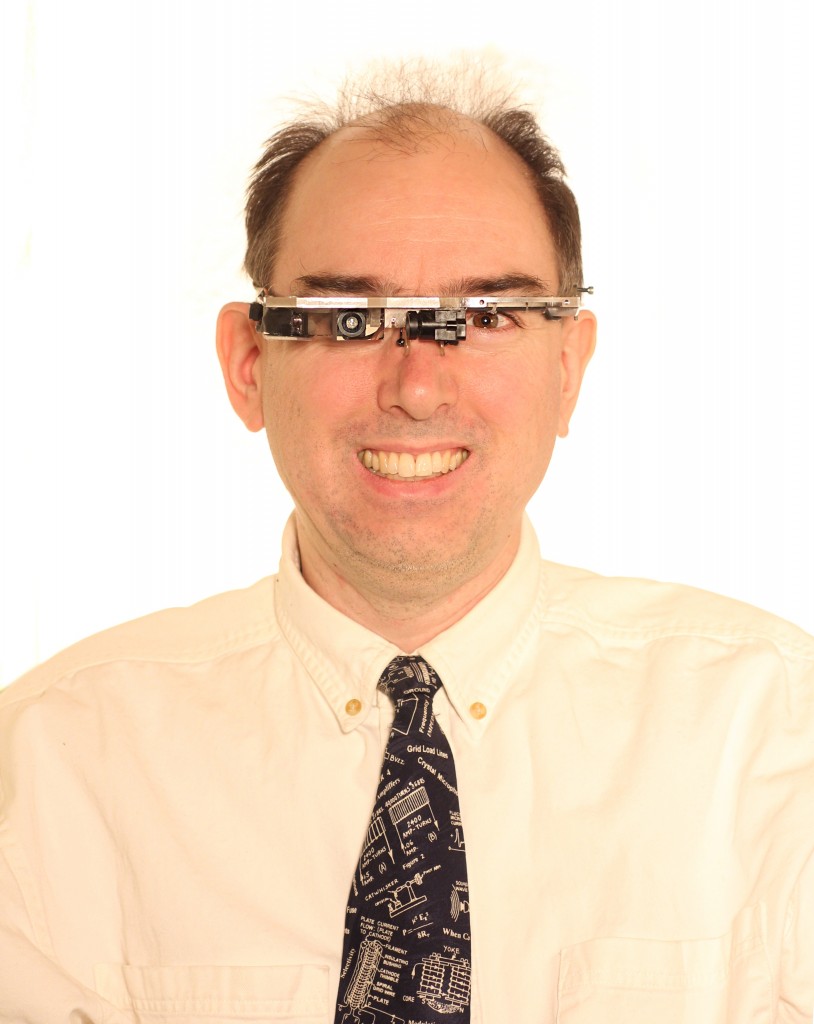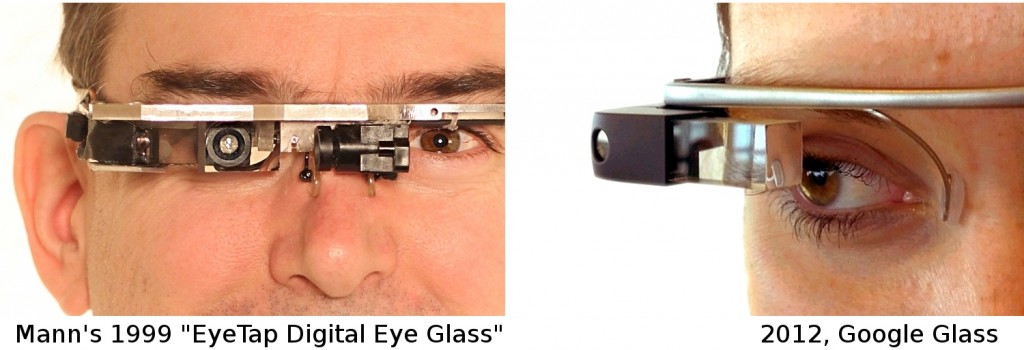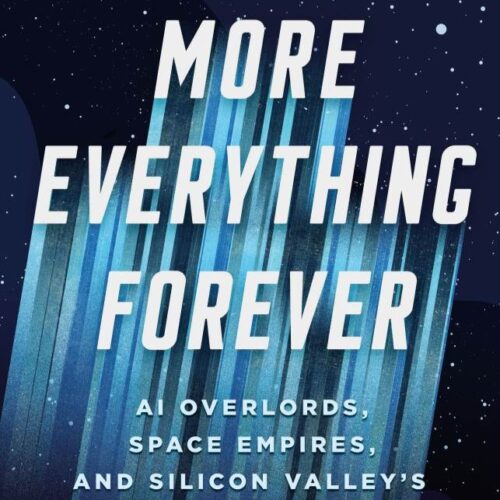Cyborg Luddite Steve Mann: Technology That Masters Nature is Not Sustainable
Socrates / Podcasts
Posted on: August 3, 2012 / Last Modified: June 29, 2024
Podcast: Play in new window | Download | Embed
Subscribe: RSS
 Steve Mann is sometimes called the first cyborg. Other times he is called the cyborg Luddite because of the stress he puts on choosing which technologies to embrace and which ones to abandon in order to be in harmony with nature. Whatever the case may be, I was super happy to get him on Singularity 1 on 1.
Steve Mann is sometimes called the first cyborg. Other times he is called the cyborg Luddite because of the stress he puts on choosing which technologies to embrace and which ones to abandon in order to be in harmony with nature. Whatever the case may be, I was super happy to get him on Singularity 1 on 1.
During our conversation with Steve we cover a wide variety of topics such as: his early interest in both nature and technology; his MIT thesis on humanistic intelligence; his digital eye glass EyeTap camera and display technology; his inventing and usage of HDR imaging technology; augmented reality, mediated reality, augmediated reality and the long and short-term adaptation issues thereof; rethinking the relationship between nature and technology; why he is sometimes called the cyborg Luddite and his call to use less of televisions, elevators, automobiles and air-conditioning; his take on the technological singularity; surveillance and sousveillance; existemology – existential epistomology, learning by doing and learning by being; the hydraulophone; the differences between live blogging, logging and glogging.
My two most favorite quotes that I will take away from this interview with Dr. Mann are:
I am not saying more or less technology – I am saying appropriate technology. Instead of technological excess – we should have technology that is balanced with nature. Instead of replacing nature with technology – we should balance it. Instead of replacing intelligence with artificial intelligence – we should use humanistic intelligence…
[…]
I think that the only way we are ever going to understand AI is through HI. I think that the only way we are ever going to understand computers is to become a computer. And I think that the only way to understand measurement (at least as children) is to become the ruler.
As always you can listen to or download the audio file above or scroll down and watch the video interview in full. To show your support you can write a review on iTunes, make a direct donation or become a patron on Patreon.
The Hydraulophone
Steve Mann playing a hydraulophone and explaining the differences between different models.
Steve Mann and Ryan Janzen Hydraulophone Duet
Socrates and Steve Mann playing duet on the Hydraulophone (sort of)
Who is Steve Mann?
 Steve Mann has been described by the media as “the world’s first cyborg” and was named “the father of wearable computing” at the IEEE ISSCC in February 2000 for his invention of Mediated Reality (predecessor of Augmented Reality), and also invented HDR and panoramics (U.S. Pat.s 5828793+5706416) now implemented in most cameras including Apple iPhone. He also invented the neckworn sensor camera like the one now manufactured by Microsoft.
Steve Mann has been described by the media as “the world’s first cyborg” and was named “the father of wearable computing” at the IEEE ISSCC in February 2000 for his invention of Mediated Reality (predecessor of Augmented Reality), and also invented HDR and panoramics (U.S. Pat.s 5828793+5706416) now implemented in most cameras including Apple iPhone. He also invented the neckworn sensor camera like the one now manufactured by Microsoft.
Mann creates interventions+inventions to combine art+science+technology, with emphasis on interplay between technology and nature. Mann is the inventor of the hydraulophone, awarded numerous patents, the world’s first musical instrument to make sound from vibrations in liquid (other instruments make sound from vibrations in solids or gases), won first place in the Coram International Sustainable Design Award, and is the recipient of the 2004 Leonardo Award for Excellence.
Mann has written more than 200 publications+books+patents, and his work and inventions have has been shown at the Smithsonian Institute, National Museum of American History, The Science Museum (Wellcome Wing, opening with Her Majesty The Queen June 2000), MoMA (New York), Stedelijk Museum (Amsterdam), Triennale di Milano, Austin Museum of Art, and San Francisco Art Institute.
He has been featured by AP News, New York Times, LA-Times, Time, Newsweek, Fortune, WiReD, NBC, ABC, CNN, David Letterman (#6 on Letterman’s Top Ten), CBC-TV, CBS, Scientific American, Scientific American Frontiers, Discovery Channel, Byte, Reuters, New Scientist, Rolling Stone, and BBC. Thousands of articles about him have appeared worldwide in many languages.
He received his PhD degree from MIT in 1997, and is a tenured professor at University of Toronto, where he teaches and does research in the Faculty of Applied Science and Engineering, the Faculty of Arts and Sciences, and the Faculty of Forestry.
Mann’s award winning documentary cyborglog ShootingBack, and ideas from his recent book Cyborg: Digital Destiny and Human Possibility in the Age of the Wearable Computer(Randomhouse Doubleday, 2001) inspired a 35mm feature length motion picture film about his life, said, by P.O.V., to be “Canada’s most important film of the year”.
In the words of MIT Media Lab founder Nicholas Negroponte, Mann “brought the seed” that founded the MIT Wearable Computing project.

Joi Ito, the world’s leading entrepreneur in moblogging, credits Mann with having initiated the moblogging movement by creating the world’s first system for transmission of realtime pictures, video, and text. In particular, from 1994 to 1996, Mann continuously transmitted his life’s experiences, in real time, to his website for others to experience, interact with, and respond to. His CyborGLOGS (‘glogs), such as the spontaneous reporting of news as everyday experience, were an early predecessor of ‘blogs and the concept of blogging, and earlier than that, his pre-internet-era live streaming of personal documentary and cyborg communities defined cyborglogging as a new form of social networking.
Together with his students James Fung and Chris Aimone, and neurologist Ariel Garten, Mann founded InteraXon, a Canadian company, that is commercializing the cyborg technology developed by Mann, Fung, and Aimone. InteraXon created a large-scale public art installation for the Vancouver Olympics (the flagship project of the Ontario Pavillion), running Feb. 12-28, 2010. The installation bridged the gap between cyberspace (cyborgspace) and physical space, allowing participants to use their brainwaves to control the lights on major architectural landmarks (the CN Tower in Toronto, the Parliament Buildings in Ottawa, and the lights on Niagara Falls).
Related articles
- McDonald’s staff took offence to digital glasses, Toronto cyborg says (cbc.ca)
- Ryan Janzen on Singularity 1 on 1: Jarring is What We Need (singularityweblog.com)
- One on One: Steve Mann, Wearable Computing Pioneer (bits.blogs.nytimes.com)









